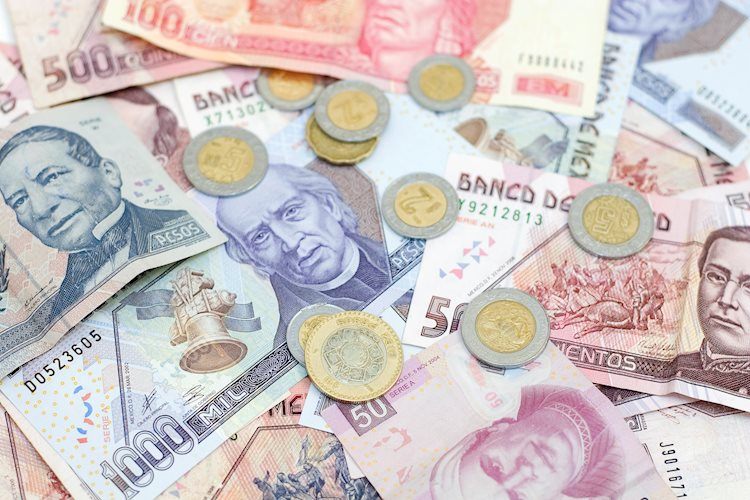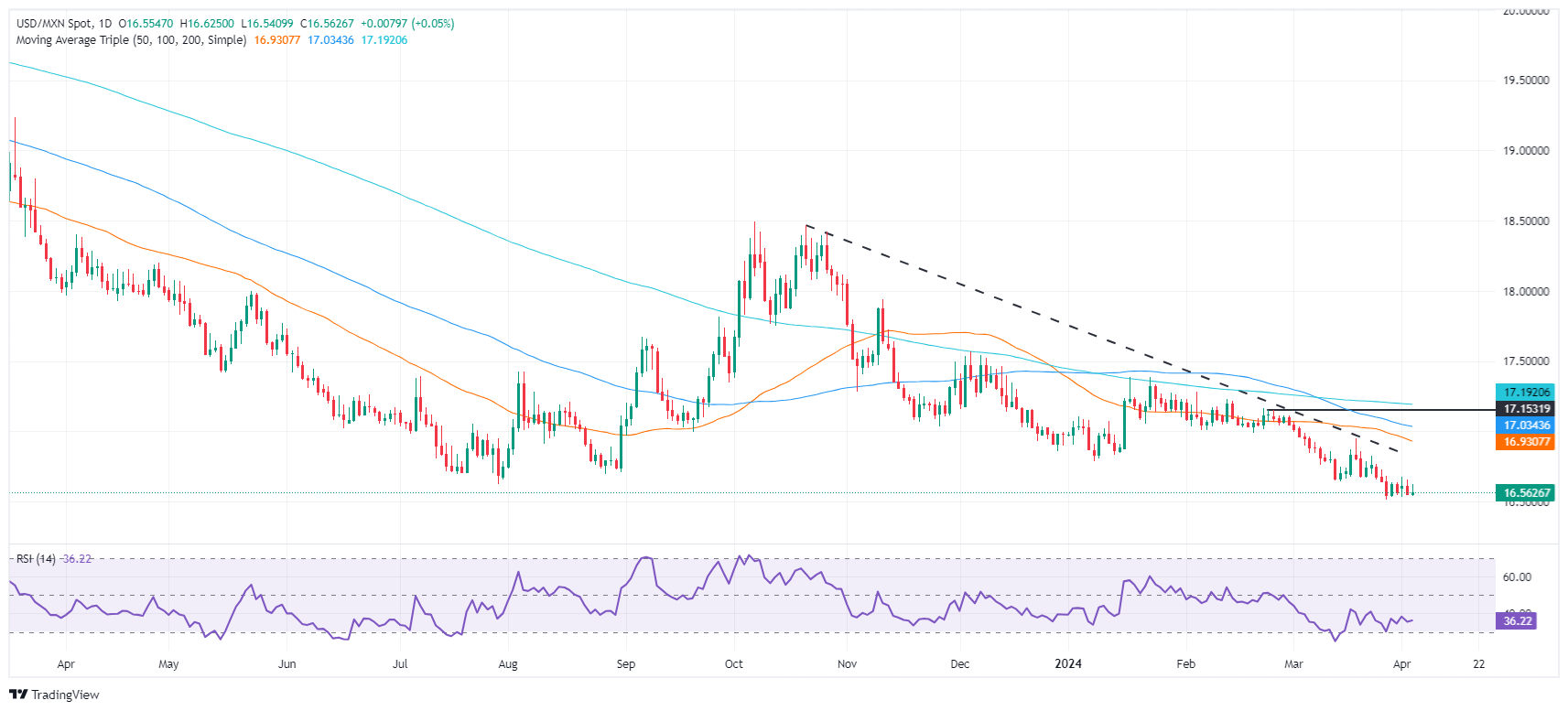- Mexican Peso rises despite higher US Treasury yields, mixed data.
- Atlanta Fed President Bostic’s hawkish outlook sponsored traders repricing for a less dovish Fed.
- US jobs data was strong, while Services PMI suggests business activity decelerates.
The Mexican Peso posts gains against the US Dollar on Wednesday as US Treasury yields climbed, sponsored by Atlanta Federal Reserve President Raphael Bostic’s hawkish comments. Economic data from the United States (US) was mixed, while goodish Gross Fixed Investment figures in Mexico capped the emerging market currency’s fall. The USD/MXN trades at 16.53, down 0.11%.
The Greenback is trading mixed during the session, depreciating against most G8 currencies but clocking gains against emerging market ones. Atlanta Fed President Raphael Bostic highlighted the economy’s strong momentum but emphasized the need for growth and inflation to slow. He anticipates a rate cut in the last quarter of 2024 and projects inflation to reach the Fed’s 2% target by 2026.
Recently, Fed Chair Jerome Powell stated the US central bank has time to deliberate about rate cuts, given the strength of the economy and the inflation readings. He reiterated that if the economy evolves as expected, they will cut borrowing costs “at some point this year.”
Nevertheless, Powell emphasized that could happen once they “have greater confidence that inflation is moving sustainably down.”
Data-wise, the US economic docket features employment data and Services Purchasing Managers Index (PMI) by S&P and the Institute for Supply Management (ISM). Automatic Data Processing (ADP) revealed that private hiring increased above estimates and the previous month’s reading in March, portraying a tight labor market, which is positive for the Greenback. However, recently released data suggesting that business activity is cooling down, as portrayed by S&P Global and ISM Services PMI, capped US Dollar recovery.
Daily digest market movers: Mexican Peso advances, shrugging off mixed US data
- Mexico’s Gross Fixed Investment figures in January came at 0.1% MoM, up from December’s 0%. In the twelve months to January, investment grew 15.3%, crushing December’s 13.4% increase.
- Last week, Banxico Governor Victoria Rodriguez Ceja remained dovish despite acknowledging that the battle against inflation hasn’t been won. She added, “When macroeconomic conditions and the inflationary outlook allow us to make additional adjustments to the reference rate to the one we already have, I consider that they would be gradual.”
- The ADP Employment Change in March was 184K, above the 148K foreseen by the consensus and February’s 155K.
- S&P Global revealed that the Services PMI came to 51.7, down from 52.3, while the Composite Index slowed from 52.5 to 52.1. The ISM revealed that Non-Manufacturing PMI was 51.4, down from 52.6 and lower than projections for a 52.7 expansion.
- On Tuesday, Cleveland Fed President Loretta Mester said that she doesn’t have enough information for a May meeting cut yet foresees three rate cuts in 2024. Mester added the Fed’s challenge would be balancing the risks between inflation and employment.
- San Francisco Fed President Mary Daly said the Fed needs to see how long to keep rates at current levels. She supports three rate cuts but added that it’s a projection, not a promise.
- Regarding future interest rate expectations of the Fed, the CME FedWatch Tool suggests that traders see a 57% chance of the US central bank cutting borrowing costs.
Technical analysis: Mexican Peso buyers in charge but could shift neutral with USD/MXN clearing 16.70
The USD/MXN remains bearish with sellers eyeing a re-test of the year-to-date (YTD) low of 16.51. Nevertheless, the pair could consolidate at 16.50 as the Relative Strength Index (RSI) remains in bearish territory. But sellers are losing momentum. However, a push below 16.50 would expose the October 2015 low of 16.32, ahead of the 16.00 mark.
On the flip side, If USD/MXN buyers enter, they must lift the exchange rate above the 16.70 area. Once cleared, the next stop would be the 50-day Simple Moving Average (SMA) at 16.94, with further upside seen at the 100-day SMA at 17.04, ahead of the 200-day SMA at 17.18.
Banxico FAQs
The Bank of Mexico, also known as Banxico, is the country’s central bank. Its mission is to preserve the value of Mexico’s currency, the Mexican Peso (MXN), and to set the monetary policy. To this end, its main objective is to maintain low and stable inflation within target levels – at or close to its target of 3%, the midpoint in a tolerance band of between 2% and 4%.
The main tool of the Banxico to guide monetary policy is by setting interest rates. When inflation is above target, the bank will attempt to tame it by raising rates, making it more expensive for households and businesses to borrow money and thus cooling the economy. Higher interest rates are generally positive for the Mexican Peso (MXN) as they lead to higher yields, making the country a more attractive place for investors. On the contrary, lower interest rates tend to weaken MXN. The rate differential with the USD, or how the Banxico is expected to set interest rates compared with the US Federal Reserve (Fed), is a key factor.
Banxico meets eight times a year, and its monetary policy is greatly influenced by decisions of the US Federal Reserve (Fed). Therefore, the central bank’s decision-making committee usually gathers a week after the Fed. In doing so, Banxico reacts and sometimes anticipates monetary policy measures set by the Federal Reserve. For example, after the Covid-19 pandemic, before the Fed raised rates, Banxico did it first in an attempt to diminish the chances of a substantial depreciation of the Mexican Peso (MXN) and to prevent capital outflows that could destabilize the country.

